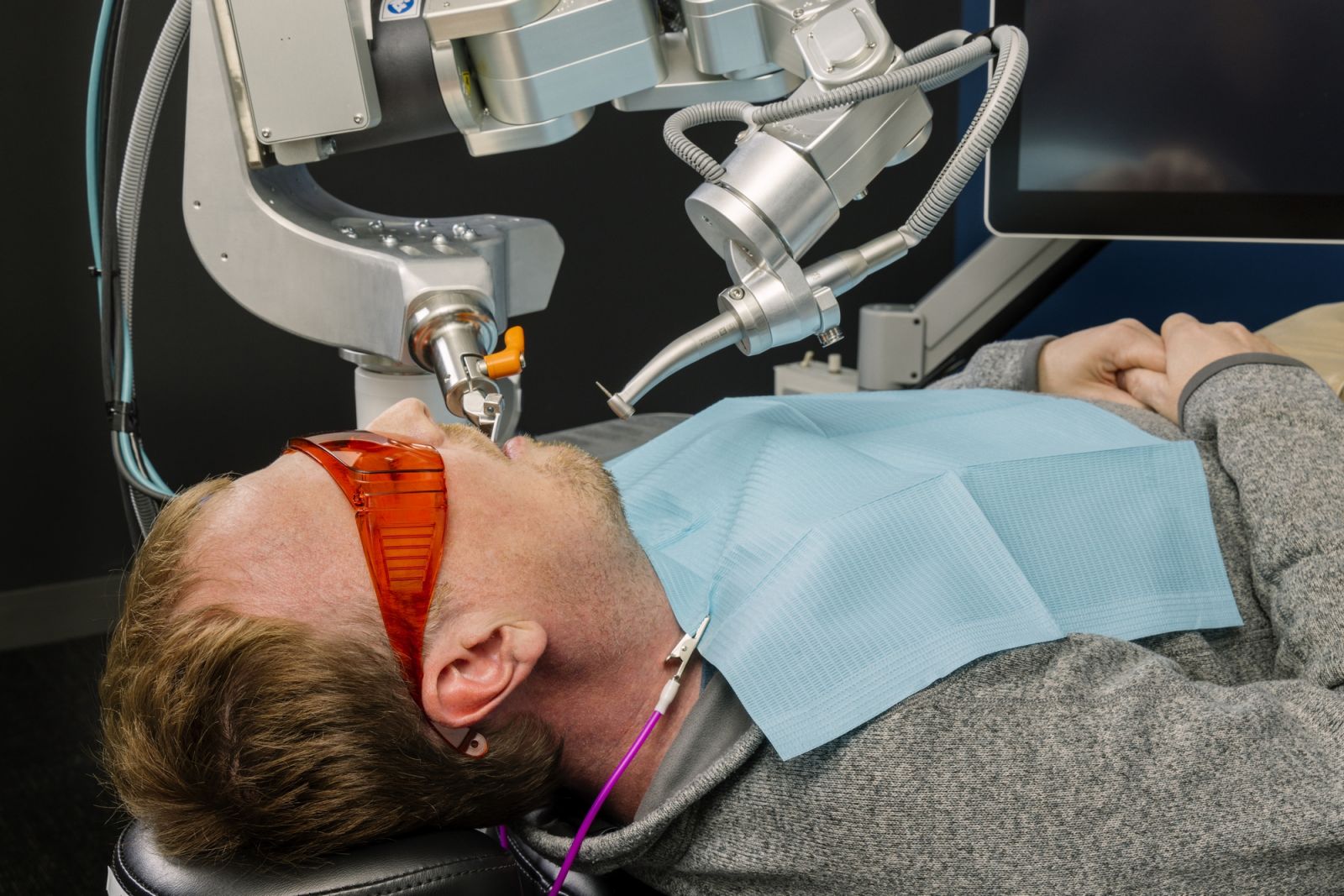This dental robot performs its first autonomous procedure on a human
Published by Cédric,
Article author: Cédric DEPOND
Source: Business Wire
Other Languages: FR, DE, ES, PT
Article author: Cédric DEPOND
Source: Business Wire
Other Languages: FR, DE, ES, PT
Follow us on Google News (click on ☆)

Perceptive has designed a robotic system combining AI and advanced imaging technologies, particularly optical coherence tomography (OCT). This technology creates a detailed three-dimensional model of the patient's mouth, including subgingival and internal tooth structures. Thanks to OCT, the Perceptive robot can detect cavities with 90% accuracy, far surpassing the 45% accuracy of traditional 2D X-rays. Additionally, this technology is distinguished by the absence of ionizing radiation, commonly used in conventional dental scanners. Finally, its effectiveness is impressive in adapting to sudden patient movements.
In this world first, the robot installed a crown in just 15 minutes, about eight times faster than a human dentist, who typically requires two hours over two sessions. This speed is made possible by automating each step of the process, from diagnosis to procedure execution. Chris Ciriello, CEO of Perceptive, emphasizes that this innovation not only improves the quality of care but also democratizes access to cutting-edge dental treatments.
One of Perceptive's goals is to address the global shortage of dentists. In the United States, for example, there is one dentist for every 2,620 people, an inadequate ratio to meet the growing demand for dental care. The use of robots could enhance access to care by reducing dependence on human practitioners.
However, the introduction of autonomous robots in the dental field raises questions. While the precision and efficiency of interventions are undeniable, the issue of patient acceptance remains open. Perceptive's system has not yet been approved by the Food and Drug Administration (FDA) for market release, implying that its large-scale deployment will not occur immediately.
This advancement is part of the ongoing progress in robotic surgery. It remains to be seen how the public and the medical community will receive this increasingly autonomous technology.